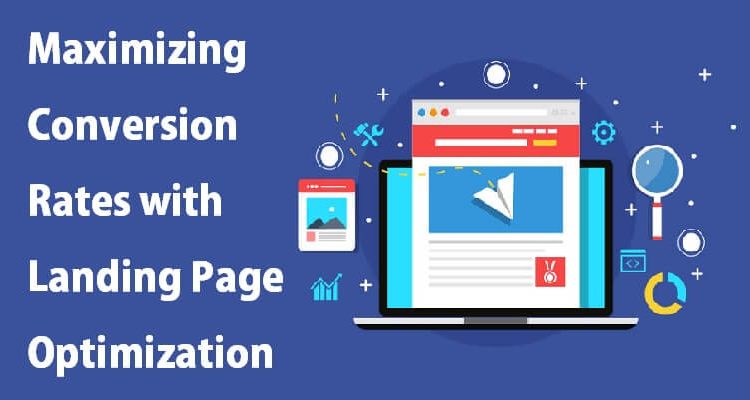Maximizing Conversion Rates with Landing Page Optimization

In the digital age, the role of landing pages in the eCommerce journey is more critical than ever. Acting as the first point of contact between your business and potential customers, these pages are instrumental in driving conversions. Landing page optimization is the process of enhancing various elements of these pages to improve user experience and increase the likelihood of converting visitors into customers. This article will explore the various strategies and techniques to optimize your landing pages, ultimately boosting your eCommerce conversion rates.
The Importance of Landing Page Optimization in eCommerce
Effective landing pages directly influence eCommerce conversion rates. They serve as a unique opportunity to capture the interest of potential customers and encourage them to proceed with a purchase or desired action. In a competitive digital marketplace, optimized landing pages can provide a significant competitive advantage, making the difference between a visitor bouncing off or converting. The optimization of these pages is crucial in guiding the customer’s purchase journey and decision-making process, making it an indispensable aspect of any successful eCommerce strategy and one that any eCommerce CRO agency should employ.
Key Strategies for Landing Page Optimization
A/B Testing
This method involves comparing two versions of a landing page to determine which performs better. By systematically testing different elements, such as headlines, images, or call-to-actions (CTAs), businesses can gain insights into customer preferences and behaviors. Effective A/B testing can lead to significant improvements in page elements, driving higher conversion rates.
Clear Call-to-Actions (CTAs)
CTAs are crucial in guiding visitors toward the desired action, whether it’s making a purchase, signing up for a newsletter, or downloading a guide. The CTAs should be clear, compelling, and easy to locate; resonating with the target audience’s needs and motivations.
Improving Page Speed
Page load times significantly impact user experience and bounce rates. Slow-loading pages can frustrate visitors and drive them away. Optimizing page speed through techniques like image compression and code minification is essential for keeping visitors engaged and improving the chances of conversion.
Ensuring Mobile Responsiveness
With a significant portion of internet traffic coming from mobile devices, ensuring that your landing pages are mobile-friendly is non-negotiable. Pages should be easily navigable, load quickly, and display content clearly on smaller screens to accommodate the vast number of users browsing on smartphones and tablets.
Creating a Strong Visual Hierarchy
The arrangement of elements on a landing page significantly affects how visitors process information. A strong visual hierarchy guides visitors’ attention to the most important information and actions; making the path to conversion as intuitive as possible.
Advanced Techniques and Considerations
Utilizing Persuasive Design Elements
Persuasive design is a critical aspect of creating effective landing pages. By understanding and implementing color psychology; you can evoke the right emotions and actions from visitors. For example, using a color like red for your CTA can create a sense of urgency; while blue can build trust and security.
Directional cues such as arrows or images of people looking towards the CTA can subtly guide users’ attention to the most important elements of the page. Whitespace, or negative space, is equally important; it helps reduce cognitive overload; making the content more digestible and focusing users’ attention on the conversion goal.
A well-designed landing page with thoughtful use of these persuasive design elements can significantly impact the decision-making process and drive users towards the desired action.
Incorporating Trust Signals
Trust signals are a vital component of successful landing pages; as they help overcome skepticism and build credibility with potential customers. Testimonials from satisfied customers, especially when accompanied by names, photos, or video, provide social proof and can significantly influence decision-making. Featuring user reviews, particularly those with high ratings; can also boost confidence in your product or service.
Security badges or seals, especially in industries where trust is paramount, like finance or health, reassure visitors that their personal and financial information is safe. Displaying industry awards, certifications, or press mentions can further enhance the credibility of your business.
When these trust signals are strategically integrated into your landing pages, they work collectively to reduce customer hesitancy and reinforce the decision to convert; ultimately leading to higher conversion rates.
Measuring Success and Continual Improvement
The optimization of landing pages is an ongoing process. Continuously measuring performance through key metrics like conversion rates, bounce rates, and visitor behavior is essential for understanding what works and what doesn’t. Regularly analyzing these metrics allows for continual refinement and adaptation of strategies to meet changing user preferences and market trends.
Conclusion
Optimized landing pages are a cornerstone of successful eCommerce operations, significantly impacting conversion rates and overall business performance. By implementing the strategies discussed, such as A/B testing, clear CTAs, and mobile responsiveness, and continuously measuring and refining your approach; you can significantly improve the user experience and conversion rates of your landing pages. As the digital landscape evolves, so should your landing page strategies; ensuring that your business remains competitive and continues to grow.
